king to be a life-saving doctor or an Olympic athlete, one thing is certain: having a healthy smile will contribute to their success.
The perks of a straight, healthy smile can impact your child’s life in many ways. While a beautiful smile can help them build confidence and make friends, healthy teeth also contribute to their whole body’s health.
Plaque buildup can cause tooth decay and cavities. And untreated tooth decay can cause bacteria from your child’s teeth to travel through their bloodstream and create other health issues.
But beyond staying on top of their brushing and flossing routine, crooked teeth can also cause oral health problems. Misaligned teeth can make it difficult to chew, impacting your child’s digestive system. Crooked teeth can also create hard-to-reach areas that their toothbrush can miss, leading to cavities.
Crooked teeth and misaligned bites should be evaluated by an orthodontist, who may recommend braces. Braces have been an effective treatment tool helping people of all ages get straight, easy-to-clean teeth with perfect bite alignment since 1819!
Needless to say, braces technology has advanced significantly since then. Modern treatment options are now more comfortable and less noticeable than ever.
If your child has crooked teeth or bite alignment issues, they may need the help of braces. But how soon is too soon?
Today, we’ll explore when to get braces for your child, reasons they may need them, and how to pay for them without breaking the bank.
What is the Best Age to Get Braces?
There is no “right” age for orthodontic treatment. Timing is determined by the type of problem your child has or may develop, and whether early intervention is recommended.
Some patients may require tooth movement only, while others may need help guiding their jaws’ growth.
The American Association of Orthodontists recommends that your child see an orthodontist for a check-up or orthodontic consultation around 7 years of age. Children will have a mix of primary (baby) and permanent (adult) teeth around this age.
Just because your child should go to the orthodontist for the first time at age 7 doesn’t mean they’ll be wearing braces that young! There is a difference between an orthodontic check-up and actually starting orthodontic treatment.
Many children begin orthodontic treatment between 10 and 14 years of age. Many permanent teeth emerge during this time, and your child’s head and jaw will continue to grow. This makes it easier for an orthodontist to make adjustments to teeth that will last. Once braces are on, your child will likely wear them for an average of 1 to 2½ years.
Palate Expander and Other Prep Work
From ages 7-10, your orthodontist might recommend early orthodontic treatments to prepare your child’s mouths for braces and to help guide the placement of permanent teeth that are still growing in.
This is sometimes known as two-phase orthodontics. Phase one treatment will generally focus on optimizing your child’s facial and muscular structure’s growth and positioning.
In the first phase, your orthodontist will monitor your child’s mouth and teeth and may recommend early treatments like a palate expander. This is a piece of hardware that conveniently fits on the roof of your child’s mouth and gradually expands over time. This also gradually expands your child’s upper jaw, making it easier for crowded teeth to move into correct positioning.
There is usually a period of a few months or years between phases one and two, giving your child’s mouth time to adjust between phases. In phase two, your orthodontist will apply braces or other orthodontic devices to your child’s teeth to create a straight, healthy smile.
How Do You Know if Your Child Needs Braces?
Just like every child is different, every child’s teeth are a bit different, too.
Sometimes, it’s not entirely clear whether they need braces or not. Here are a few signs it’s time to schedule an orthodontist appointment for your child:
You notice spaces or gaps between their permanent teeth
- Gaps in their permanent teeth can affect their speech and chewing abilities, and food can get trapped between them and lead to tooth decay.
Your child lost their baby teeth early
- Children usually start to lose their teeth at around 5 or 6 years old.
- If they start losing them before then, it might be due to tooth decay
- Losing baby teeth too early can cause permanent teeth to crowd.
Their bite doesn’t align
- An underbite is when your child’s lower teeth land on top of their upper teeth when they bite down.
- An overbite is where their top teeth protrude over their bottom teeth notably.
- Both of these bite issues need the attention of an orthodontist.
They have a hard time chewing
- If your child is often biting their tongue or cheek or express discomfort while chewing, they might need braces.
They have speech problems
- Some speech problems are due to misaligned teeth and/or jaw bones, which can cause your child’s tongue to have trouble landing where it should help their mouth form a word.
Closely observing your child’s chewing and speech habits when they’re young can help you better understand if they’ll need braces.
Habits like thumb sucking or long term binky use can cause their teeth to become crooked. Even consistent mouth breathing can change how the teeth and jaws line up.
Be sure to begin brushing your child’s teeth as soon as they start to grow in, and help them floss as soon as two teeth touch.
Our Premier orthodontists will look for all the signs above, as well as ask you a few questions about your child’s chewing and speech habits.
They’ll have handy tools to determine whether braces are recommended and make the whole process enjoyable and comfortable for your child and you.
How to Pay for Braces
It’s no secret that braces can be a little pricy. Luckily, there are ways to get help paying for them.
While many health plans don’t cover braces for people over 18, some will help cover them for children. Every plan is different, but many provide an annual lifetime maximum allowance of $1500.
Medi-Cal Dental or Denti-Cal does cover braces, though not every patient with Medi-Cal/Denti-Cal will qualify. Our Premier orthodontist will first take measurements to determine if your child is eligible. If a patient does qualify, Premier teams will send your child’s records for review and preauthorization by Medi-Cal/Denti-Cal.
At Premier Orthodontics, we work with all our patients to find financing options that work for them.
We’ll help guide you to the right people to chat with about financing as well as make you an appointment for a free consultation! Book yours today >

